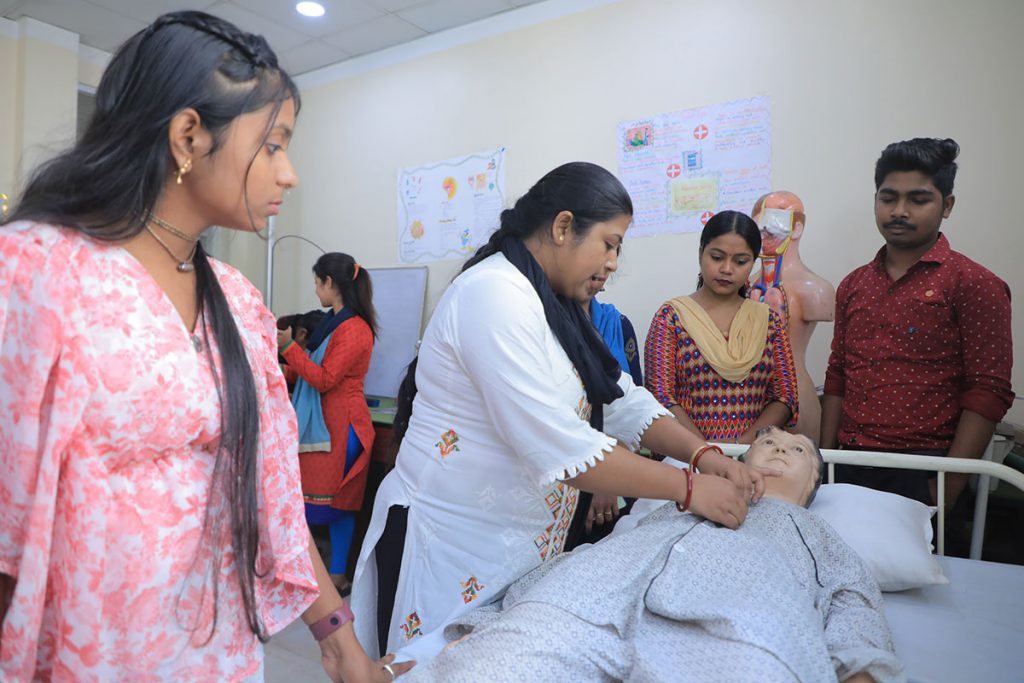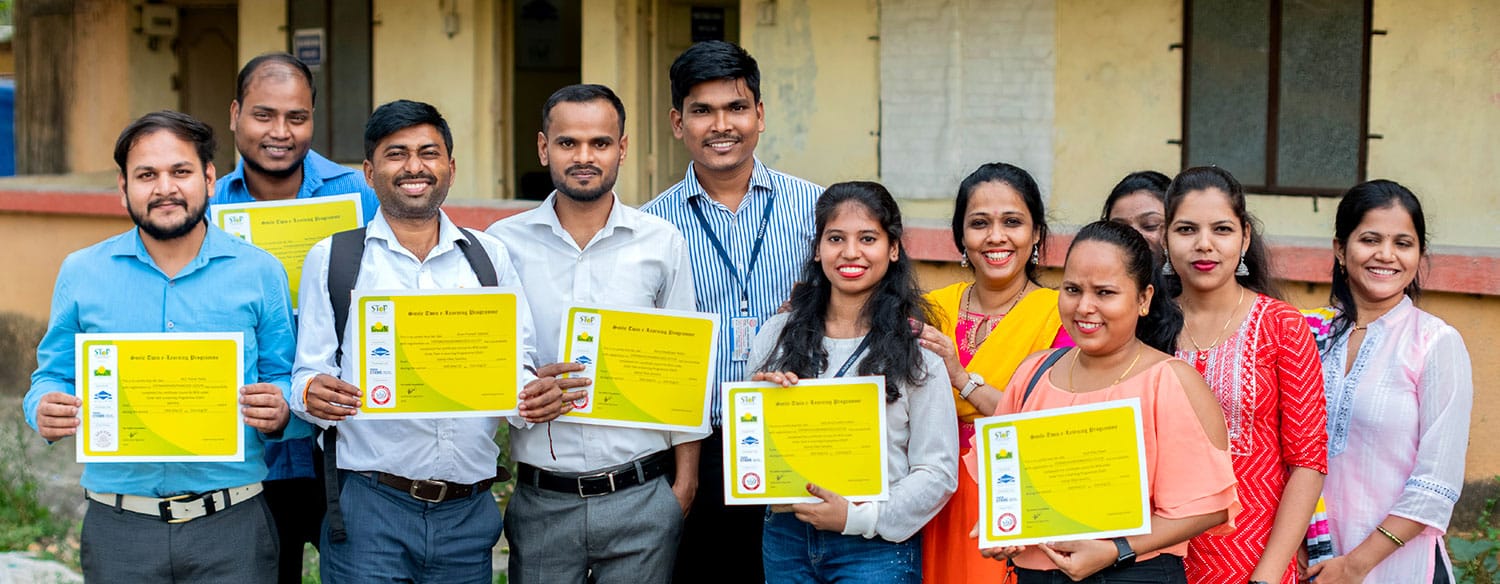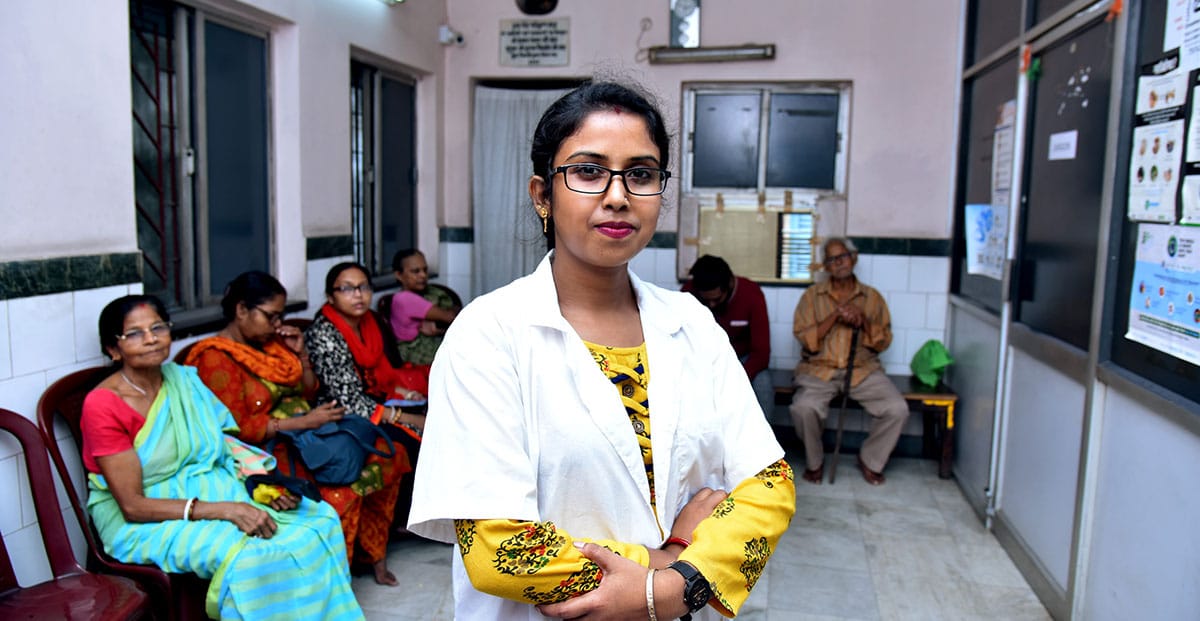July 2023

By 2047, India will have 1.1 billion people in the working age group (15-64), which equates to 1.6 times the entire population of Europe.
India is a country of multitudes. It is rich in culture and diversity. The largest democracy in the world and it has been gaining global attention for its economic growth and potential. But, what sets India apart from the rest of the world today is the demographic dividend that the country enjoys.
India has a large population which is young and they provide a huge opportunity for future growth. According to some estimates, India’s demographic dividend window opened in
2005-06 and it is expected to last till the mid-2050s. By 2047, India will have 1.1 billion people in the working age group (15-64), which equates to 1.6 times the entire population of Europe.
This is the peak of the demographic dividend that the country is expected to reach in the coming years. And, this is why the next two decades are extremely crucial for India.
Understanding the Demographic Dividend
Simply put, a demographic dividend is when the share of the working population in a country is significantly higher than the dependent population. If we consider the working population as those individuals between the ages of 18 and 59, then if a country has more people in this bracket, that means it has a demographic dividend opportunity. So, what makes demographic dividend so critical?
When a country has a larger working population, it can become more productive and accelerate its growth. This means that the country has more production capacity and with a smaller dependent population. The United Nations Population Fund defines it as: “the economic growth potential resulting from shifts in a population’s age structure, mainly when the share of the working-age population (15 to 64) is larger than the share of the non-working-age population (14 and younger, and 65 and older).”
The increase in productivity of the working population that results from low birth rates and low mortality rates benefits the economy of the country that experiences them. The proportion of young dependents in the labour force decreases when fewer births are recorded. An economy’s resources are freed up and invested in other sectors to speed up a country’s economic development and the future prosperity of its population with fewer people to support and more people working.
Demographic dividend occurs in two stages: the first stage is when the labour force expands because of a decrease in death and birth rates. This stage can last for five decades. As mentioned before, it helps increase productivity and drives the growth in per capita income. People come out of poverty, their incomes grow, and they also save more. India is currently experiencing this stage of the demographic dividend.
In the second stage, the retired population continues to reap the benefits of the savings and invests the money in various growth instruments. This stage can last indefinitely and help in
long-term sustainable growth for any country. For India, the period from 2021 to 2041 is the most crucial because this is when the country’s working-age population ratio will be equal to or more than 150%.
Creating the Right Opportunities
While India is currently going through a golden period of demographic dividend, the country must realize its potential by creating a fertile ground for the people to grow. The demographic dividend can only lead to higher productivity if there are enough work opportunities available for the people. For example, if the working-age population is at its peak and the country can provide work for a majority of them, then they can reap the best benefits of the demographic dividend.
This is the reason why the country needs to work extensively in the areas of health, education, skilling, gender equality, and especially livelihood. An improvement in these areas can ensure a healthy and skilled working population with contributions from all genders to maximize productivity.

This is also important because if this population, full of youthful energy, fails to find appropriate work, it can quickly lead to a chaotic situation where a large number of people are fighting for a few jobs, leading to dissatisfaction among the masses. Thus, the two most critical areas that the country needs to work on are the employability of the people and sufficient employment opportunities for them.
Normal school curriculum-based instruction that merely imparts academic knowledge of subjects hardly ever leads to employment. And for the millions of young people in the nation who live in impoverished circumstances, higher education is a distant dream. This is not due to their lack of theoretical understanding. It is rather the absence of the proper skill sets and training. Thus, there is a gap between the workforce’s availability and the needs of the sector that must be filled.
Additionally, the macro perspective confirms that it is essential for youth from disadvantaged backgrounds to have their energies appropriately directed to support national development and economic prosperity.

Challenges & Gaps
According to data released by the Centre for Monitoring Indian Economy (CMIE), an independent economic think tank, the unemployment rate in the country stood at 8.3% in December 2022. It has been seen as a worrying sign by some experts because it is higher than the unemployment rate in January 2022 when it stood at 6.56%. This means that the unemployment rate reached a 16-month high before the start of 2023.
The country, like the rest of the world, is already battling the repercussions of covid and global uncertainties. Economic progress has slowed down for countries across the world. Therefore, it can be said that India’s golden period of demographic dividend has also come at a time when economic challenges are extremely complicated.
This is the reason why there are added problems for the country when it comes to employment generation. At a time when job cuts are being observed in the biggest corporations of the world, the task of employment generation within the country seems formidable.
The Confederation of Indian Industry (CII) has also expressed its worry about this issue. In a report titled “Harnessing India’s Demographic Dividend for Boosting Growth” released in April 2022, the CII stated that if the country fails to create enough jobs for its growing working population and the people are not supported through appropriate skilling, it can create a huge liability for the country.
“While we are likely to add 101 million people in the working age population between 2020-30, this number will reduce to 61 million and then to 21 million for 2030-40 and 2040-50, respectively. It is expected that India’s working-age population will start declining in the decade post-2050,” the report added. Further, according to the CII, barely 3% of the workforce in India has any type of formal vocational training.
While the country is working towards promoting entrepreneurship among the younger population, a lot still needs to be done for the employment generation. Support for micro, small, and medium businesses is extremely important because they are the biggest drivers of employment generation in suburban and rural areas. However, covid pandemic and subsequent lockdowns had a strong impact on these businesses and the majority of them have been struggling to get back on their feet.

What do we need to do?
The Indian economy surpassed the UK in 2022 to become the fifth-largest economy in the world. However, to continue the growth, India needs to invest in education, health, skilling, and livelihood generation.
The country must focus on the employability of its working force and also generate enough employment opportunities in different sectors. The government and private sector have been working in this area and the development sector has been playing an important role in complementing their efforts. Strong policies and grassroots initiatives will help us reap India’s demographic dividend, as will addressing gender disparity in access to education and employment opportunities that encourage active participation of women in India’s growth story.
Smile Foundation is also committed to providing the necessary support to the government in skilling and education. The organisation has been working on various initiatives that are focused towards achieving these goals. One such initiative is STeP (the Smile Twin e-Learning Programme) that has been helping underserved youth find gainful employment by imparting soft skills, computer skills, English language skills, and industry-specific knowledge to the students, especially class X and XII dropouts.
Over the years, the initiative has evolved with the changing industry requirement. During Covid-19, we began focusing on sectors with high growth potential like Banking, Financial Services and Insurance (BFSI), Core Employability, Healthcare, Digital Marketing, Retail Management, and Business Process Outsourcing (BPO) to prepare the youth for available employment opportunities. The course modules are designed keeping the evolving market requirements in mind, and are complemented by industry exposure visits, engagement activities with potential employers, and a strong placement cell with close to 400 employment partners.
As the employment gap is bridged, the country’s productivity is expected to grow rapidly. This is the goal India should aim for as it enjoys the golden period of demographic dividend.



